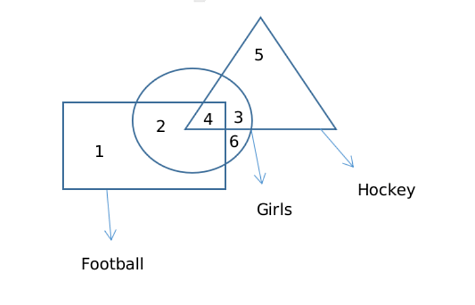Question:
Study the given pattern carefully and select the number that can replace the question mark (?) in it:
$$
\begin{bmatrix}
4 & 10 & 9 \\
5 & 13 & 13 \\
7 & 19 & ? \\
\end{bmatrix}
$$
Study the given pattern carefully and select the number that can replace the question mark (?) in it:
$$
\begin{bmatrix}
4 & 10 & 9 \\
5 & 13 & 13 \\
7 & 19 & ? \\
\end{bmatrix}
$$
Show Hint
When row patterns are unclear, try analyzing column-wise or diagonally. Pay attention to arithmetic progressions or difference sequences.
Updated On: May 29, 2025
- 23
- 13
- 17
- 21
Hide Solution
Verified By Collegedunia
The Correct Option is D
Solution and Explanation
Let’s examine each row for a pattern.
Row 1: \(4,\ 10,\ 9\) \(\Rightarrow 4 + 5 = 9\), but that doesn’t explain 10.
Try column-wise.
Column-wise analysis: \[ \begin{aligned} \text{Column 1:} &\quad 4,\ 5,\ 7 \\ \text{Column 2:} &\quad 10,\ 13,\ 19 \\ \text{Column 3:} &\quad 9,\ 13,\ ? \\ \end{aligned} \] Column 2 shows: From 10 to 13: \(+3\) From 13 to 19: \(+6\) So the pattern is increasing by \(+3,\ +6\), suggesting a progression. Now, look at differences:
Column 3: From 9 to 13: \(+4\) Then we expect next difference to be \(+8\) \[ 13 + 8 = 21 \] So, the missing number is \(\boxed{21}\)
Answer: \(\boxed{21}\)
Was this answer helpful?
0
0
Top Questions on Counting Figures
Find the number of squares in the given figure:

- Bihar BEd CET - 2025
- Logical Reasoning
- Counting Figures
How many straight lines are there in this figure?

- TS LAWCET - 2024
- Logical Reasoning
- Counting Figures
- How many squares and triangles are there in the following figure?

- TS LAWCET - 2024
- Logical Reasoning
- Counting Figures
- Given below is the diagram which represents various sports played by the students. Based on the diagram find the number of girls who neither play hockey nor football

- CMAT - 2023
- Logical Reasoning
- Counting Figures
Find the number of squares:

- Bihar BEd CET - 2023
- Logical Reasoning
- Counting Figures
View More Questions
Questions Asked in Bihar BEd CET exam
- If all the A are dropped from the given arrangement, which of the following option will be eleventh from the left in the given arrangement? CUBAEDEDABEBBAUCDBCADB
- Bihar BEd CET - 2025
- Letter Based
- If all the A's are dropped from the given arrangement, which of the following option will be eleventh from the left in the given arrangement?
Original arrangement:CUBAEDEDABEBBAUCDBCADB- Bihar BEd CET - 2025
- Sequence and Series
- What is the number of Earth satellites?
- Bihar BEd CET - 2025
- Astronomy
- If the rank of Reena in a group of 48 candidates is $11^{th}$ from the top, then what will be the rank of Reena from the bottom?
- Bihar BEd CET - 2025
- Ordering and Ranking
- A teacher should do it:
- Bihar BEd CET - 2025
- Methods of Teaching
View More Questions